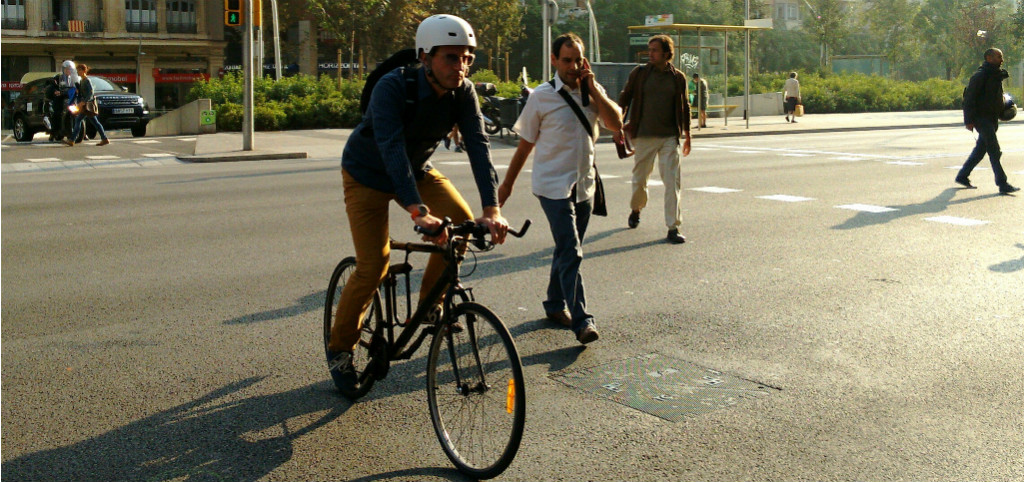Health Impacts of Active Transportation in Europe
Study published in Plos One and led by CREAL-ISGlobal researchers
03.03.2016
Policies that stimulate active transportation (walking and bicycling) have been shown to produce significant health benefits. This study, led by CREAL, an allied ISGlobal center and published in Plos One, aims to assess the potential health risks (air pollution, accidents) and benefits (physical activity) of promoting active transportation for commuting populations (age groups 16-64) in six European cities. Researchers conducted a health impact assessment using two scenarios: increased cycling and increased walking.
The primary outcome measure was all-cause mortality related to changes in physical activity level, exposure to fine particulate matter air pollution with a diameter >2.5 microns, as well as traffic fatalities in the cities of Barcelona, Basel, Copenhagen, Paris, Prague, and Warsaw. All scenarios produced health benefits in the six cities. Researchers found that an increase in bicycle trips to 35% of all trips (as in Copenhagen) produced the highest benefits among the different scenarios analysed with in Warsaw 113 annual deaths avoided, 61 in Prague, 37 in Barcelona and Paris, and 5 in Basel. “An increase in walking trips to 50% of all trips (as in Paris) resulted in 19 deaths avoided annually in Warsaw, 11 in Prague, 6 in Basel, 3 in Copenhagen and Barcelona. The scenarios would also reduce carbon dioxide emissions in the six cities by 1,139 to 26,423 (metric tonnes per year)”, explains David Rojas, first author of the study and researcher at CREAL and ISGlobal.
Policies to promote active transportation may produce health benefits, but these depend on the existing characteristics of the cities. Increased collaboration between health practitioners, environmentalists, transport specialists and urban planners will help to introduce the health perspective in transport policies and promote active transportation.
This study highlights the importance of cities’ existing characteristics in determining health impacts of active transportation policies. Characteristics such as baseline physical activity levels in the population, traffic safety or air quality, can increase or decrease the benefits associated with active transportation policies. “Such policies will produce higher health benefits when they focus on more sedentary population or more sedentary modes of transport, i.e. cars”, says Mark Nieuwenhuijsen, coordinator of the TAPAS study.
“The implementation of active transportation policies with an improvement in traffic safety, particularly for active transportation modes, will lead to greater net health benefits. And improving air quality will also reduce the risks for cyclist and pedestrians, as all other citizens, and increase the health benefits of the interventions”, specifies Rojas. According the researchers, these characteristics should be taken into account by policy makers, stakeholders and risk assessors in devising policies.
Active transportation policies can result in significant health benefits. To produce the greatest net health benefits, transport policies must first consider current traffic safety levels in the city and devise appropriate safety measures and infrastructure for cyclists and pedestrians. “The implementation of transport policies integrating a health perspective is needed in urban settings. To achieve this, a close and strong collaboration between health practitioners, transport specialists, environmentalists, and urban planners in cities is needed with strong leadership of the mayors and others responsible”, concludes Nieuwenhuijsen.



